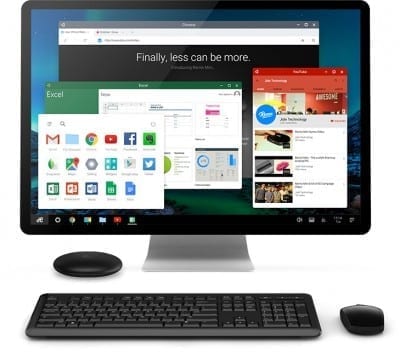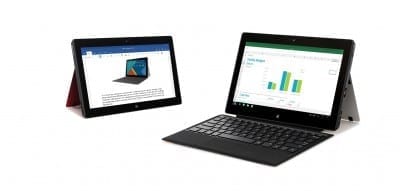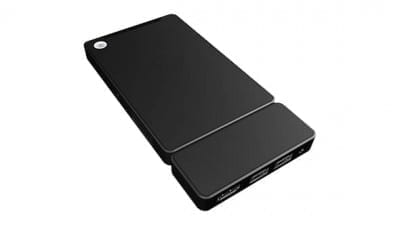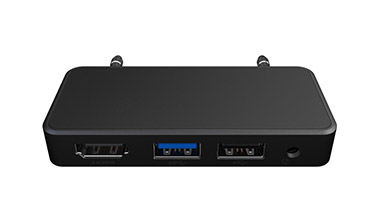Small and portable seem to be the buzzword thoughts for 2015, followed closely by productivity. Every device manufacturer seems to feel they have a special “in” on making us more portable and more productive. There were several devices that caught my attention in line with that. And my thoughts on them certainly say as much about me as the devices. Like everyone else, I’m trying to haul around less, but get what I take with me to do more. So I’ve entered the world of mini-me computing.
First, I’m not a gamer. I guess I could be called a doer. So, what I look for is not going to be the same as a gamer. At the same time, I’m not doing a bunch of number crunching either. Top end processor size and speed aren’t in my requirements. Neither is a ton of RAM to run things. With that in mind, let’s look at several possibilities.
Jide Remix Mini:
We’ve all seen those Zen-like pictures of round or oval smooth stones, strategically placed to communicate peace. At first glance, the Jide Remix mini could pass for one of those smooth stones. It’s  about the size of a smartphone, but thicker and, perhaps, a little wider.
about the size of a smartphone, but thicker and, perhaps, a little wider.
The processor, RAM, and storage are decent, but nothing to write home about. The size is 1.0 inch (2.6 cm) high, 4.9 inches (12.4 cm) long, by 3.5 Inches (8.8 cm) wide. So, it packs a lot in a small space. Despite the small size, it packs in HDMI and headphone ports, plus there are two USB 2 ports, and an ethernet port. The Remix mini includes both 802.11b/g/n Wi-Fi wireless networking and Bluetooth 4.0 wireless technology. The mini, power cord, and an HDMI cable are all included for $69.99.
I actually thought about it for a bit. The mini runs on it’s own version of Lollipop, called Remix OS. It pretty well does everything you’d expect from Android, plus a bit more to accommodate the desktop usage. That includes much better multitasking than the average Android device. It handles both audio and video streaming well.
On the other hand, keyboard trackpad taps do nothing. Some apps aren’t optimized for the screen you connect to. Some may not display right without tweaking or may be totally offscreen. The same for websites. It may take switching browsers to find which will display the full site, if it even will.
For me, the big downside is that there’s no battery power, it’s A/C only. That one surprised me because of the size. But, if you’re used to Android and you only need things like document handling, web access, and media streaming, this could be an inexpensive way to handle your computing, if you have a TV with hdmi input.
Jide Remix Ultratablet:
 This is the tablet version of the Jide Remix. It is portable, courtesy of an 11.6” touchscreen tablet that boasts what the manufacturer says is a 8 hour battery. The OS is similar, but based on an earlier version of Android than the mini and has full touchscreen capability. A magnetically attached keyboard is part of the package, as are the proprietary charger and an OTG cable. Specs are average. Like the mini, it has advanced multitasking. Unlike the mini, the only way to get on a larger screen is via Miracast. It’s also $299-359, depending on which seller and how fast you want to get it.
This is the tablet version of the Jide Remix. It is portable, courtesy of an 11.6” touchscreen tablet that boasts what the manufacturer says is a 8 hour battery. The OS is similar, but based on an earlier version of Android than the mini and has full touchscreen capability. A magnetically attached keyboard is part of the package, as are the proprietary charger and an OTG cable. Specs are average. Like the mini, it has advanced multitasking. Unlike the mini, the only way to get on a larger screen is via Miracast. It’s also $299-359, depending on which seller and how fast you want to get it.
Both Jide devices are available on Amazon or directly from jide.com
InFocus Kangaroo PC:
This one really got my attention. And I’ve actually talked to the manufacturer about this one because it  grabbed my attention and no one else had answers to several of my questions.
grabbed my attention and no one else had answers to several of my questions.
The Kangaroo is, like the Jide mini, about the size of a smartphone. But it’s a whole different animal. It’s a small rectangle that runs full-blown 64 bit Windows 10 Home, with a fingerprint scanner for alternate login. There’s an included dock that has an HDMI port and one each for USB 2.0 and USB 3.0, plus the power connection if you want to go A/C. The 1.44 Ghz can be clocked to 2.24 Ghz with built in software. The main unit has a separate microUSB port to charge the battery, as well as having 802.11 a/c wifi and Bluetooth 4.0. There’s also a microSD card slot. As you can see, it’s not an Arduino or Raspberry Pi,  but rather a pretty complete PC.
but rather a pretty complete PC.
Talking to InFocus management, there are ideas for other docks, perhaps a way to combine docks. I have my own idea for version 2. There are a few reasons why I haven’t taken the plunge on the first version, yet.
- As a complete computer, it’s easy to start going full tilt, including multitasking. 2gigs of RAM can bog down. I’d like to see 3-4 gigs.
- The processor, at normal speed, could prove sluggish. Any processor pushed to a higher speed is going to cause heat, which can eventually slow down processing and will age the electronics a lot quicker. The nature of the device doesn’t allow for much ventilation. I’d really like to see the next generation with a faster processor, so it stays cooler.
- They decided on 32 gigs of internal storage. As best as I could calculate, what I have installed on my laptop is closer to 40 gig. It’s possible to install some things to the microSD card, but that takes some experimentation, which shouldn’t be necessary. So, I want at least 64 gigs internally.
- More battery power. Four hours is not a lot. Particularly if there are classes or meetings all day. The user gets tied to whatever location in the room has a power socket.
- If you’re portable with the Kangaroo, it’s possible to get the microSD card to pop out of place. It should have some kind of door to hold the card in place.
If that sounds like I don’t want one, you’re wrong. It still has some features that, as they say, “float my boat.” Some have complained that A/C goes through the dock, not directly into the computer itself. That may be necessary to power the USB ports. But it adds a benefit. While the price of the computer includes the dock and power supply, you can buy the dock separately, including another power cord. That allows one for home and one for work, without having to carry those parts back and forth.
For portable computing it has one really nice feature: If you’re the proud owner of an iPhone or iPad, there is a downloadable app that allows connecting by cable and using the Apple device as a mobile monitor! That’s huge in the functionality department! Especially for international travel.
When I first heard of the Kangaroo, I knew it had potential. But, if you’ve never heard of InFocus, you’re not alone. They’re more known for commercial projectors, touchscreen displays, and conferencing equipment. So even though their venture into consumer computing is new, they’re not likely to disappear anytime soon. And maybe not Kangaroo computers, either. When I first started talking to them, their sole outlet was NewEgg and they were struggling to keep up. The full Kangaroo computer package is now there and in the Microsoft store. And it’s out of stock in both places.
While both the Jide devices are interesting and probably useful for lots of people, I have my eye on the Kangaroo.
What other portable computing options have you seen or used that you really like? Let us know in the comment section below, or on Google+, Facebook, or Twitter.
Last Updated on November 27, 2018.










